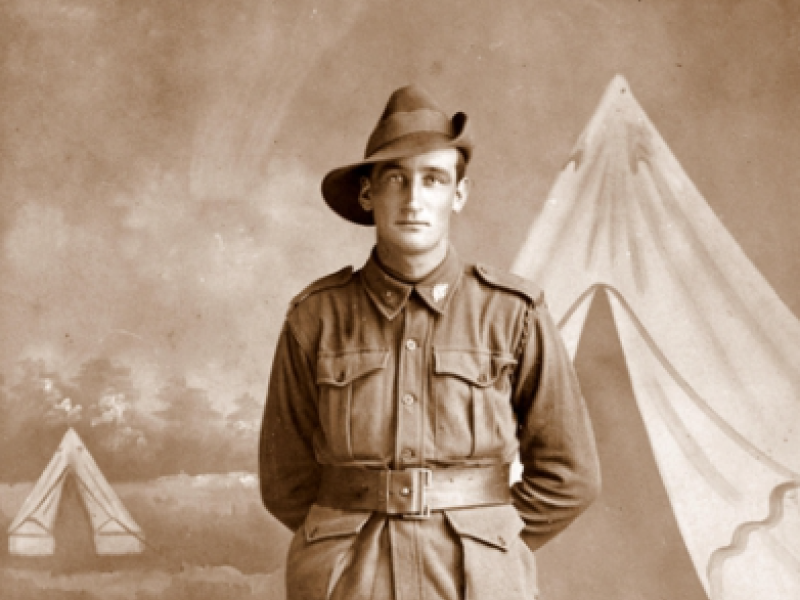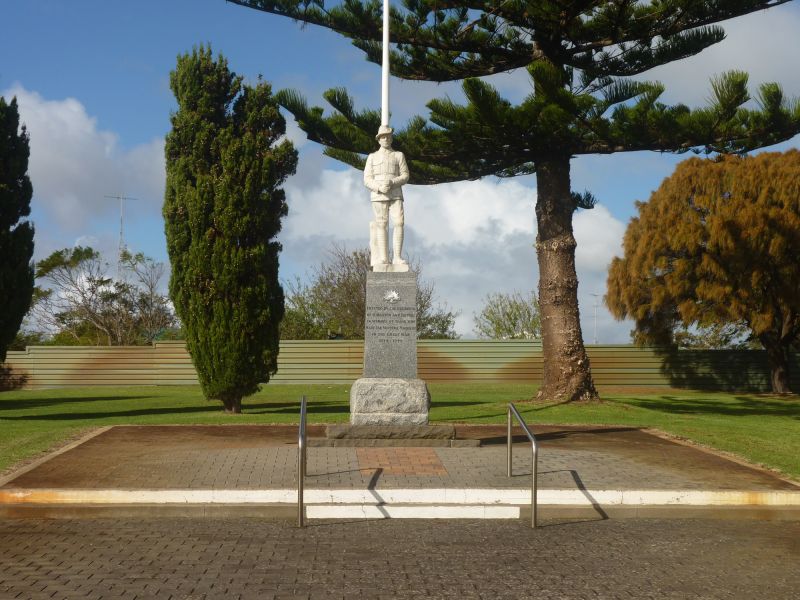Lance Corporal Sydney Cooper, 48th Battalion, AIF
Sydney Cooper was born in 1895, one of ten children to John and Margaret Cooper of Kingston in South Australia.
He attended school in the Kingston area and worked as a famer in the district. Following school, Cooper paraded with the 22nd Light Horse Regiment, a Militia unit that operated in the area. As soon as he turned 21 in April 1916, he travelled to Adelaide to enlist in the Australian Imperial Force.
Cooper spent the following two months training in Adelaide before embarking for England with a reinforcement group for the 10th Battalion.
After further training at Perham Downs on the Salisbury Plains, he was transferred to the 48th Battalion and embarked for France in October. He was taken on strength when the battalion was resting behind the lines near Amiens.
He was fortunate enough not to participate in any further fighting on the Somme but endured the relentless winter that followed as the Australians occupied the line between the villages of Flers and Gueudecourt.
It was around this time that Cooper was recognised for his leadership skills, and was promoted to lance corporal.
After the bitter winter of 1916–17, the Germans abandoned the positions they had held so tenaciously and withdrew to a new and more formidable position known as the Hindenburg Line, some 40 kilometres away.
Cooper participated in the push that followed as British and Australian troops followed up the withdrawal. By April, the Australian 4th Division stood before the Hindenburg Line at the village of Bullecourt.
The allied troops, including the 48th Battalion, attacked unsuccessfully on 11 April 1917, losing more than 3,000 Australian casualties.
Among them was Sydney Cooper, who was last seen firing a Lewis gun in the captured German trenches before being severely wounded by a shell.
According to eyewitnesses, “the machine-gun and shell-fire was very heavy on the spot where Cooper lay and the stretcher-bearers were unable to bring him in”.
He remained officially missing until a court of inquiry held in December 1917 determined that he had been killed in fighting on 11 April. He was 22 years old.
Sydney Cooper is commemorated on the Australian National Memorial at Villers-Bretonneux, alongside 10,500 Australians killed in France who have no known grave.
Aaron Pegram, Historian, Military History Section
Image: Studio portrait of 5679 Private (Pte) Sydney Cooper, 48th Battalion. c.1916

 Australian War Memorial
Australian War Memorial